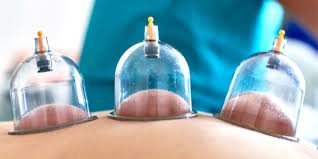Hijama therapy, also known as cupping therapy, is a traditional form of alternative medicine that has been practiced for centuries across various cultures. This therapeutic technique involves placing special cups on the skin to create suction, which helps to draw out toxins and promote healing. The therapy is especially known for its ability to provide relief from chronic pain and inflammation without the need for invasive procedures or medications.
How Does Hijama Work?
The process of Hijama in Dubai (العلاج الحجامة في دبي) involves placing glass, plastic, or silicone cups on specific points on the body. A vacuum is created inside the cups, causing the skin and underlying tissues to lift. This suction effect improves blood circulation and stimulates the flow of oxygen-rich blood to the affected area, promoting tissue repair and reducing inflammation. The therapy can be performed on various areas of the body, including the back, shoulders, neck, and legs.
Benefits Beyond Pain Relief:
While hijama therapy is primarily known for alleviating chronic pain, it offers a wide range of health benefits. In addition to pain relief, it can improve lymphatic drainage, detoxify the body, boost the immune system, and enhance overall well-being. Many people find that it also helps with stress relief and relaxation, contributing to a better quality of life.
Safety Considerations:
Hijama therapy is generally safe when performed by a trained practitioner who follows strict hygiene protocols. The procedure is non-invasive and does not require needles or injections. However, it is important to ensure that the practitioner uses clean and sterilized cups to avoid infections. As with any form of therapy, individuals with certain medical conditions, such as blood disorders or skin infections, should consult with a healthcare provider before undergoing hijama.
Effectiveness and Results:
The effectiveness of hijama therapy in treating chronic pain varies among individuals. Some people experience immediate relief, while others may need multiple sessions to achieve the desired results. The therapy is believed to help in reducing muscle tension, alleviating headaches, and improving joint function. It is often used as a complementary treatment alongside other therapeutic interventions.
Cultural and Historical Significance:
Hijama therapy has deep roots in history and culture, particularly in the Middle East and Asia. It has been practiced for thousands of years as a form of healing and spiritual cleansing. The tradition continues today as people seek natural and holistic approaches to health and wellness. The therapy is also supported by various studies that highlight its potential benefits for pain management and overall health.
Personal Experiences and Testimonials:
Many individuals have reported positive experiences with hijama therapy, sharing stories of pain relief and improved quality of life. Personal testimonials highlight how the therapy has helped them manage chronic pain, stress, and discomfort. These accounts underscore the therapy’s potential as an effective, gentle solution for pain management.
Conclusion:
Hijama therapy offers a natural and holistic approach to chronic pain relief. By addressing the root causes of discomfort and promoting healing through non-invasive techniques, it provides an alternative for those seeking relief without the use of medication or surgery.

